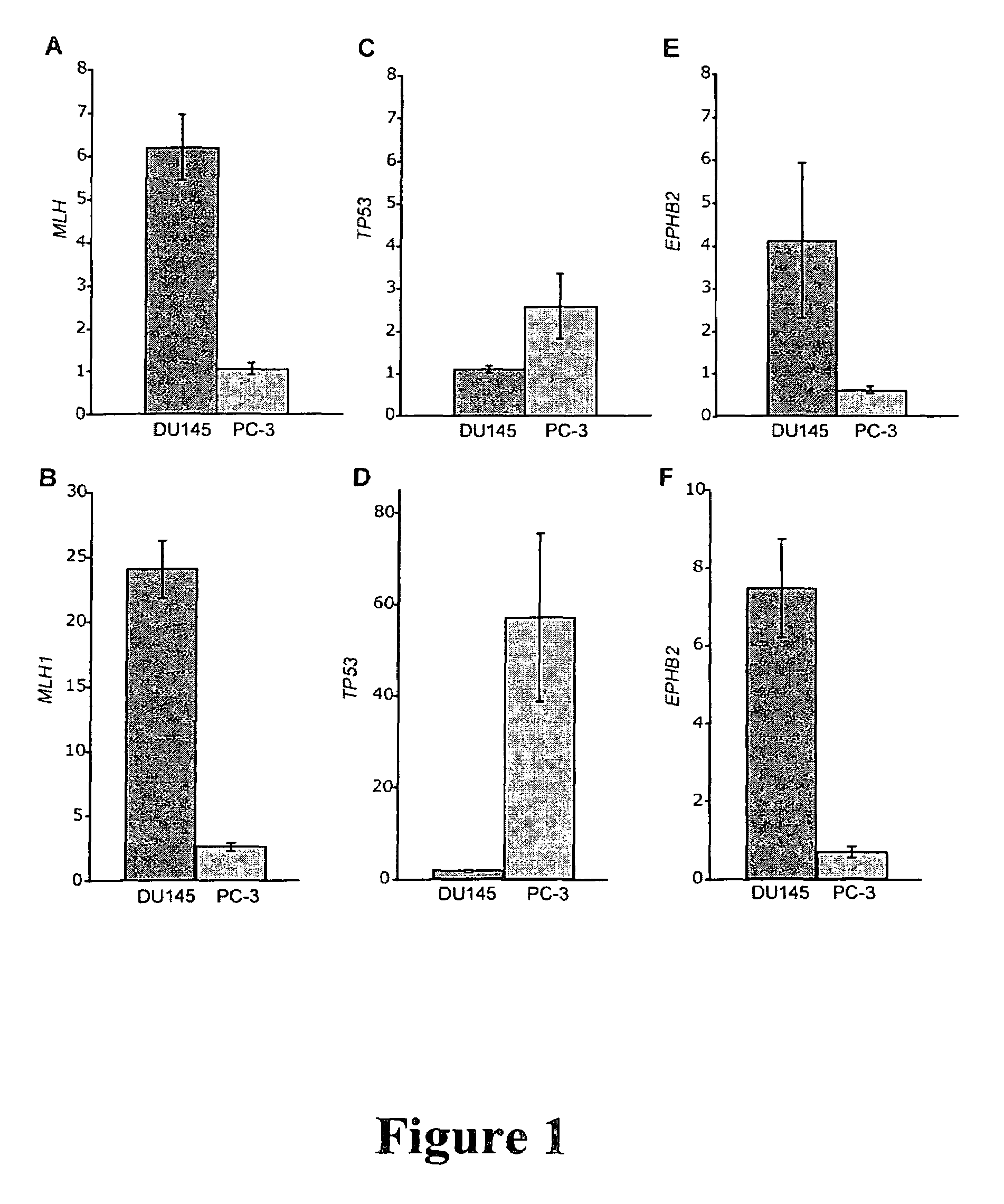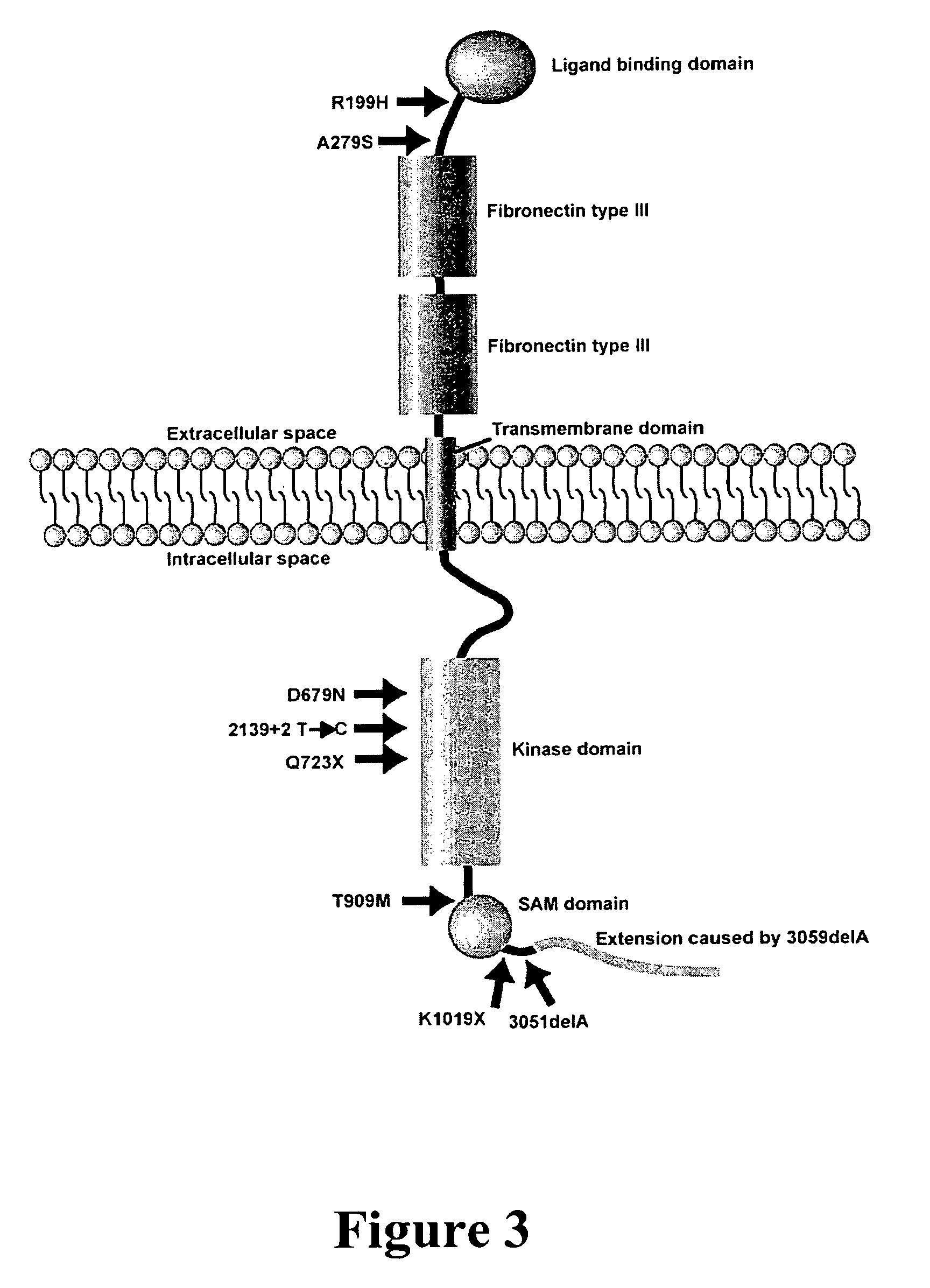Compositions and methods for prognosis of cancers
a cancer and prognosis technology, applied in the field of cancer prognosis, can solve the problems of more difficult treatment of cancer with one allele of the ephb2 gene inactivated or deregulated, etc., and achieve the effect of suppressing clonogenic growth
- Summary
- Abstract
- Description
- Claims
- Application Information
AI Technical Summary
Benefits of technology
Problems solved by technology
Method used
Image
Examples
example 1
Methods and Procedures
[0209]The EPHB2 gene was identified as a tumor-suppressor gene according to the following methods and procedures.
Cell Lines
[0210]DU 145, LNCaP and PC-3 prostate cancer cell lines were obtained from American Type Culture Collection (ATCC; Manassas, Va.). The three non-malignant cell lines used for normalization of the NMD microarray data were GM11496, GM00156 and GM00038, which were obtained from Coriell Cell Repository (CCR; Camden, N.J.). All cell lines were grown according to the distributors' instructions in 175 cm2 flasks (Corning) and incubated at 37° C.
Clinical Specimens
[0211]Five primary tumors and 39 metastases were obtained from Johns Hopkins University, Baltimore Md. Additionally, 28 primary prostate tumors and 23 metastases were obtained from the University of Basel, Switzerland. A set of 450 normal controls was obtained from anonymous blood donors and is commercially available (Coriell, Camden, N.J.). All clinical specimens used in these experiments...
example 2
A Common Nonsense Mutation in EPHB2 is Associated with Prostate Cancer Risk in African American Men with a Positive Family History
[0221]The EPHB2 gene was identified as a prostate cancer tumor suppressor gene, with somatic inactivating mutations occurring in about 10% of sporadic tumors. With its role in maintaining normal epithelial cell architecture and functional data indicative of a tumor suppressor, EPHB2 is an attractive candidate for a genetic risk factor for prostate cancer. This example evaluated the contribution of EPHB2 to prostate cancer susceptibility by screening the entire coding sequence of the EPHB2 gene to search for germline mutations in 72 probands from the African American Hereditary Prostate Cancer (AAHPC) Study Network. Ten coding sequence variants were identified. The K1019X (3055A→T) variant was present in 15.3% of the AAHPC probands, although it was previously shown to be present in 1.7% of 231 Coriell controls. In this example, a case-control analysis of t...
PUM
| Property | Measurement | Unit |
|---|---|---|
| Tm | aaaaa | aaaaa |
| pH | aaaaa | aaaaa |
| concentration | aaaaa | aaaaa |
Abstract
Description
Claims
Application Information
 Login to View More
Login to View More - R&D
- Intellectual Property
- Life Sciences
- Materials
- Tech Scout
- Unparalleled Data Quality
- Higher Quality Content
- 60% Fewer Hallucinations
Browse by: Latest US Patents, China's latest patents, Technical Efficacy Thesaurus, Application Domain, Technology Topic, Popular Technical Reports.
© 2025 PatSnap. All rights reserved.Legal|Privacy policy|Modern Slavery Act Transparency Statement|Sitemap|About US| Contact US: help@patsnap.com



